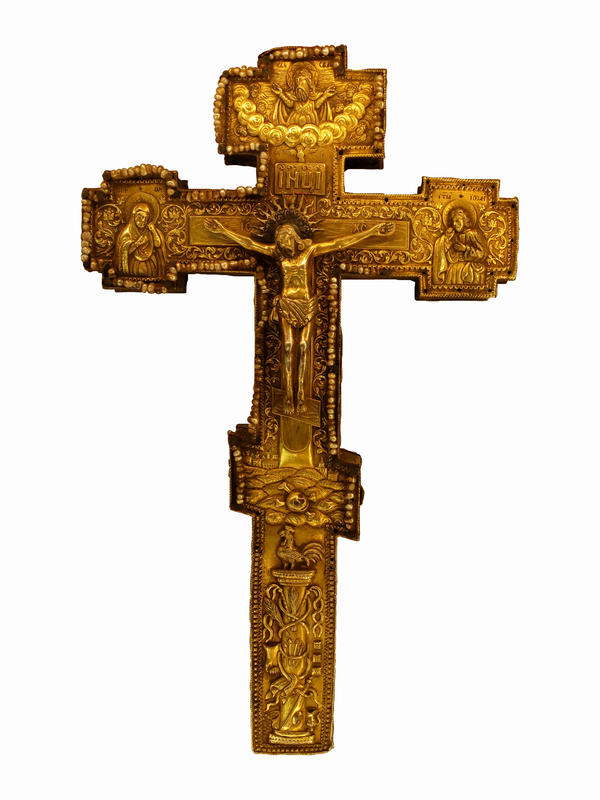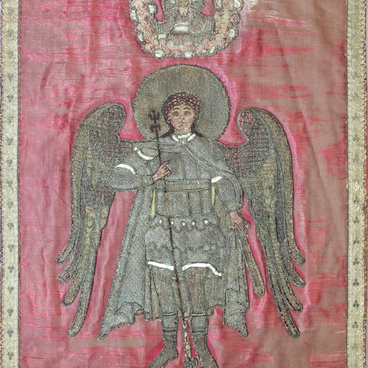The cross kept on the Holy Table is the principal accessory in the altar, the most sacred part in the Orthodox church. The faithful kiss the blessing cross after the closing prayer and dismissal. The other two most important things on the Holy Table are the Altar Gospel and antimins, a linen or silk cloth with a small piece of relics of an Orthodox martyr sewn into it.
The blessing cross from the collection of the Uglich Museum dates to the late 17th century. It is made of wood and plated with silver. The face of the cross is decorated with embossed images, including that of Lord Sabaoth at the very top. Lord Sabaoth is one of the frequently used names of God the Father, which means both the Lord of the Army of Israel or the Bodiless Powers. Slightly below the clouds, there is a dove symbolizing the Holy Spirit.
The focal point is the Crucifix with a cast figure of Christ, fully dimensional, on a separate cross. The foot of the Crucifix rests on Golgotha, or Calvary, the rock or hill where Jesus was crucified, and six towers that symbolize Jerusalem.
The lower part of the cross is decorated with a number of symbols representing the Instruments of Passion, the spiritual and physical suffering of Jesus during the last days of His earthly life. This decoration suggests that the maker of the cross was familiar with the European art of that time: in Russia, on Instruments of Passion had been placed on icons and church vessels until the second half of the 17th century. Art historians attribute this to the influence of European Baroque. The symbols include the pillar to which Jesus was tied during the interrogation, the hand that flogged Him, the four nails, the scourge, the whip, and the rope.
The blessing cross from the collection of the Uglich Museum dates to the late 17th century. It is made of wood and plated with silver. The face of the cross is decorated with embossed images, including that of Lord Sabaoth at the very top. Lord Sabaoth is one of the frequently used names of God the Father, which means both the Lord of the Army of Israel or the Bodiless Powers. Slightly below the clouds, there is a dove symbolizing the Holy Spirit.
The focal point is the Crucifix with a cast figure of Christ, fully dimensional, on a separate cross. The foot of the Crucifix rests on Golgotha, or Calvary, the rock or hill where Jesus was crucified, and six towers that symbolize Jerusalem.
The lower part of the cross is decorated with a number of symbols representing the Instruments of Passion, the spiritual and physical suffering of Jesus during the last days of His earthly life. This decoration suggests that the maker of the cross was familiar with the European art of that time: in Russia, on Instruments of Passion had been placed on icons and church vessels until the second half of the 17th century. Art historians attribute this to the influence of European Baroque. The symbols include the pillar to which Jesus was tied during the interrogation, the hand that flogged Him, the four nails, the scourge, the whip, and the rope.



